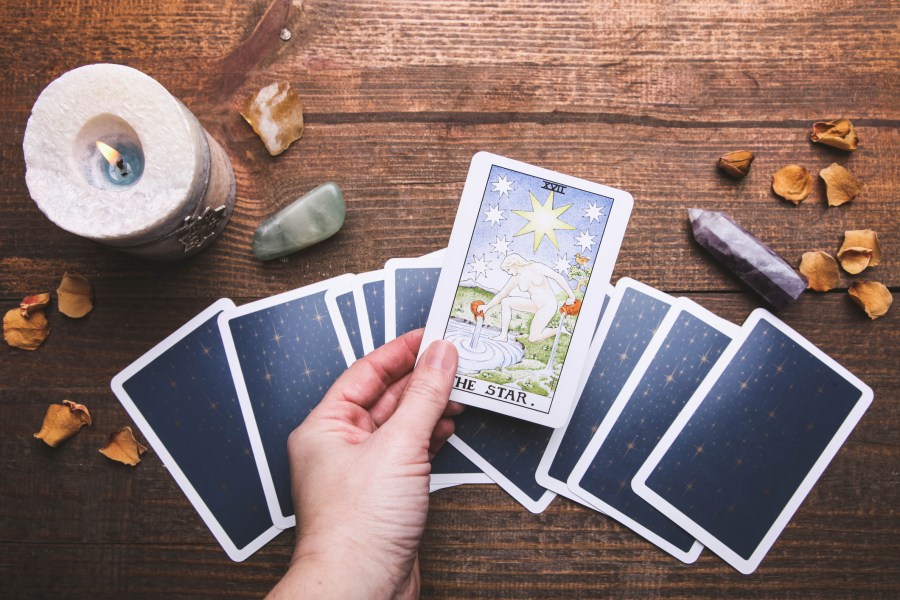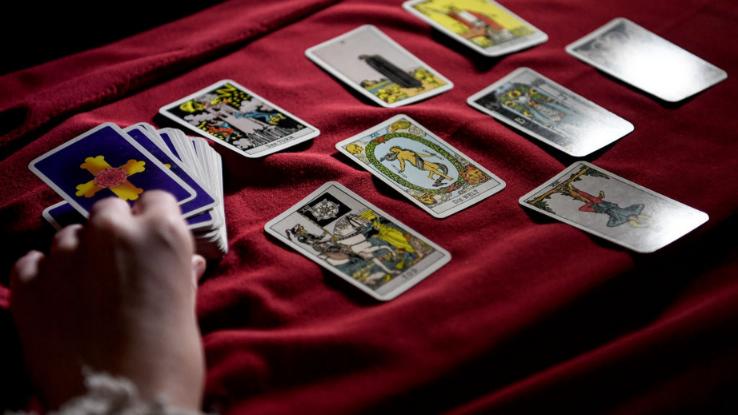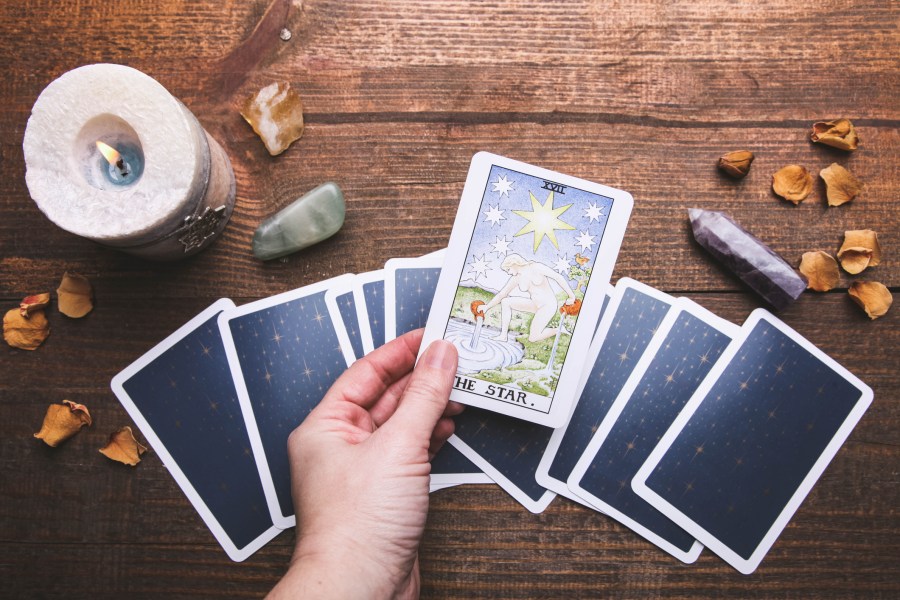
Often associated with popular activities like burning sage, collecting crystals, and #selfcare, tarot has become a staple in many different cultures and communities today. Even fashion brand DIOR has jumped into the tarot conversation, launching collections inspired by the many images found in a tarot deck.
But tarot is much more than just aesthetics. It’s easy to get lost in the images of a tarot deck in the same way you get lost in an art museum, but the history of tarot goes back centuries and the images were chosen on purpose . People haven’t always read tarot, but personal tarot readings go back much further than you might think.
Is tarot based on real people or other divinatory practices? Or should you be skeptical of stories that come from shuffled cards? If you are considering consulting them for meaning or guidance, knowing the origin of tarot cards and practices can broaden your view on the subject. Here we break down tarot, starting at the very beginning.
What is Tarot?
To understand what tarot is, we have to go back to the Renaissance. The bubonic plague of the Middle Ages influenced the start of the Renaissance, and not just artistically. During the outbreak, many people stayed indoors and had a lot of free time, much like what we experienced in 2020. But without streaming services or smartphones, people found low-tech ways to have fun.

Back then, tarot cards looked a lot like the regular playing cards we know today. Both types of cards have four suits and feature “face” cards like a king, queen, jack and ace. So, if you want, you can play traditional card games like poker or solitaire with your tarot deck. But the four suits can also help interpret the cards. Called the “Minor Arcana,” the number cards and face cards that most closely correspond to modern playing cards are (most often) categorized into suits of Wands, Swords, Cups, and Pentacles. The “Major Arcana” are 22 cards without suits like The Lovers, The Fool and The Devil.
At the time, cards were not called “tarot”. Instead, they used the word “trionfi”. Trionfi can be translated as “trump” or “triumph cards”. Trionfi decks are historical artifacts. Few people survive today. The game we played with them was called “tarocchi”.
Most early games were based on the images invoked by poets like Francesco Petrarch and Matteo Maria Boiardo. Petrarch originated the term “trionfi” and Boiardo introduced the term “tarocchi”. The people depicted in the cards were meant to be representations of abstractions, such as justice and love. The illustrations allowed people who didn’t have the opportunity to see much outside of the land near their homes to experience unique visuals. Knowing this, it’s easier to see the appeal that tarot had in its fun beginnings.
Witchcraft games with tarot began only in the second half of the 18th century. Much of the occult association with tarot comes from an essay called “The Primitive World” by Antoine Court de Gébelin. In the essay, Gébelin states that the tarot came from The Book of Thotha collection of writings believed to have been written by Thoth, an ancient Egyptian god. This idea would now be labeled fake news, but at the time there were no fact checkers, so the story persisted.
Inspired by this writing, a soothsayer named Jean-Baptiste Alliete, who used the pseudonym “Etteilla”, helped popularize the reading of tarot cards rather than playing with them. Before that, Etteilla was a fortune teller, so he was able to construct and apply the cards to his own practice. In 1789, Etteilla published his first game accompanied by a guide. (As is the case with many spiritual practices today, capitalism is unfortunately never far away.)
Tarot’s status as an emerging trend has created a demand for notable tarot card readers. Marie Anne Lenormand read tarot cards for Napoleon and Joséphine Bonaparte, Robespierre and Tsar Alexander I. “Celebrity psychics” are certainly nothing new.

The next major development in tarot reading came from Eliphas Lévi. The French author, who was born in the early 1800s and lived until 1875, rejected Etteilla’s interpretation of the tarot, but believed the tarot had roots in ancient Egypt, existing even before Moses. Dogma and Ritual of High Magic, released in two parts in 1854 (Dogma) and 1856 (Ritual), was Lévi’s first book on the theme of tarot, paving the way for new interpretations of the card game. Levi, a former Catholic priest, wrote more than 20 books on magical Kabbalah, alchemy and other spiritual practices.
Tarot entered the modern era in 1909 with the release of the Rider-Waite deck. The Rider-Waite deck featured changes suited to English-speaking audiences as well as those that seemed more current for the time. In the game, The Lovers, a popular card, changed from an image of a medieval man and woman being blessed by a priest to Adam and Eve, naked in the garden. Names like “The Popess” were changed to “The Priestess”. This type of card game is often recommended for beginners and remains one of the most popular tarot decks in the world today.
Self-Care and Stigma: Tarot Readings Today
Tarot card reading has never been more popular. People are able to read cards for themselves, for loved ones, and even for strangers on social media. The occult roots are still there, but most tarot readers today would say that the cards are more of a tool for interpreting the life around them rather than making serious predictions.
Although tarot is more popular than ever, there is still a stigma associated with the practice. In 2021, eBay banned the sale of reading material on its site. And even the ACLU fought for tarot as recently as 2019, arguing that banning tarot outright would be a violation of First Amendment rights.

Despite the reluctance of some authorities, tarot remains popular with young people, particularly young women. Tarot has been used as a therapeutic technique in some cases. Young people had to deal with the financial collapse of 2008, several wars, a pandemic and other uncertain times. This uncertainty, combined with greater access than ever to education and knowledge sharing, means people are discovering tarot and discovering that it can be a great way to evaluate their lives and anticipate what’s next.
As for the rest of the tarot, the celestial sky is the limit. Contemporary tarot decks often bring thematic variations to the cards, such as Khaneaton’s Black Power tarot deck, which features figures from black history including Billie Holiday and Martin Luther King Jr. More and more artists create new games, both for the sake of empowerment and novelty, all the time. Who knows what kinds of meanings you will end up drawing from a tarot card reading, or how the tarot cards will be used later.
